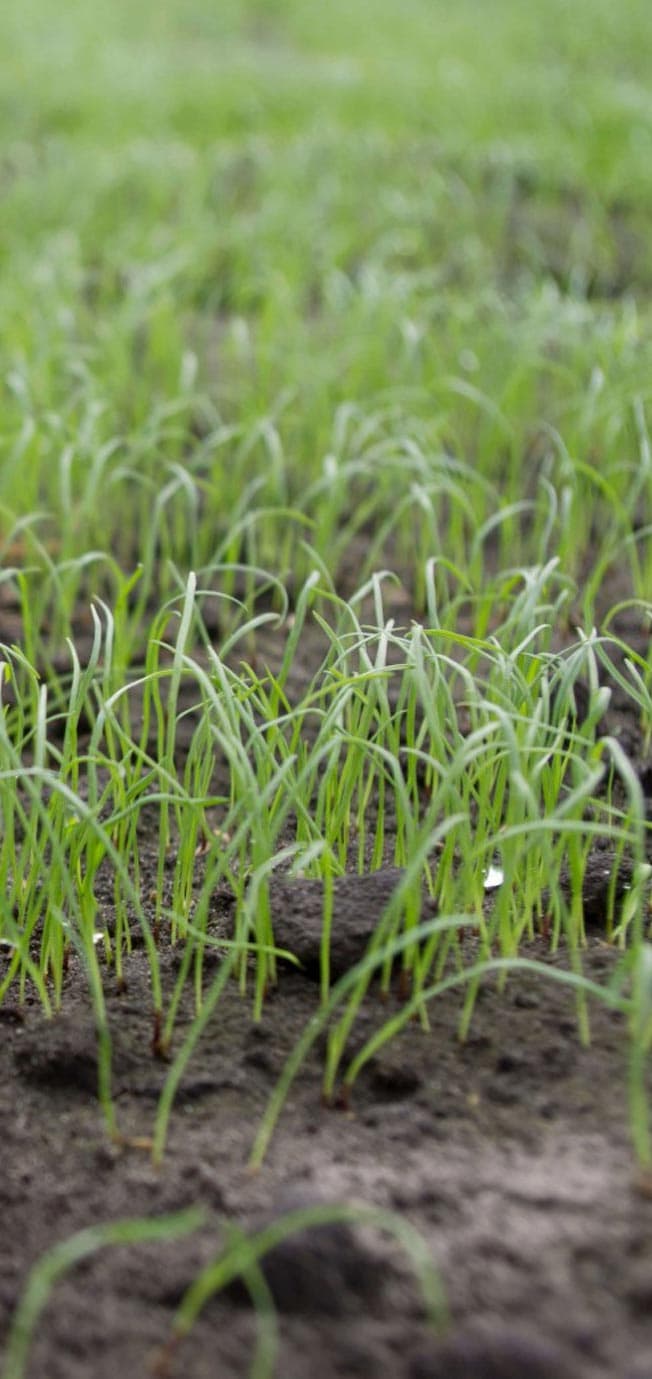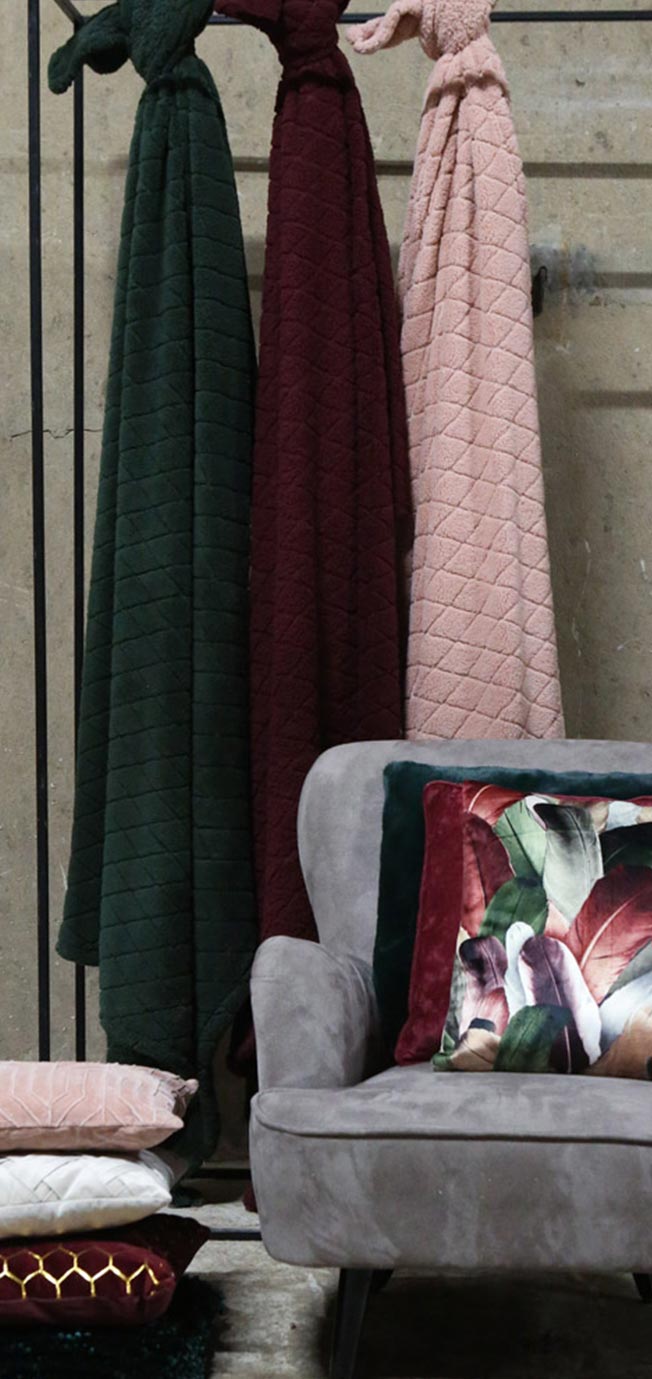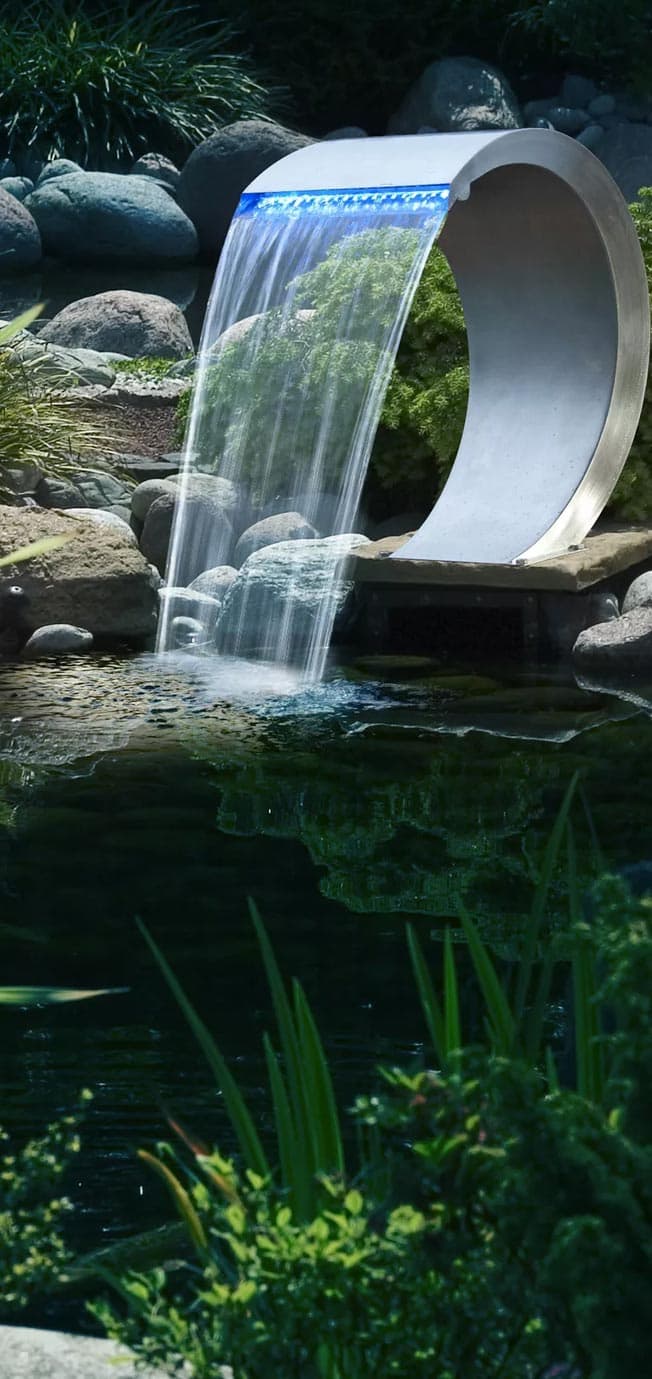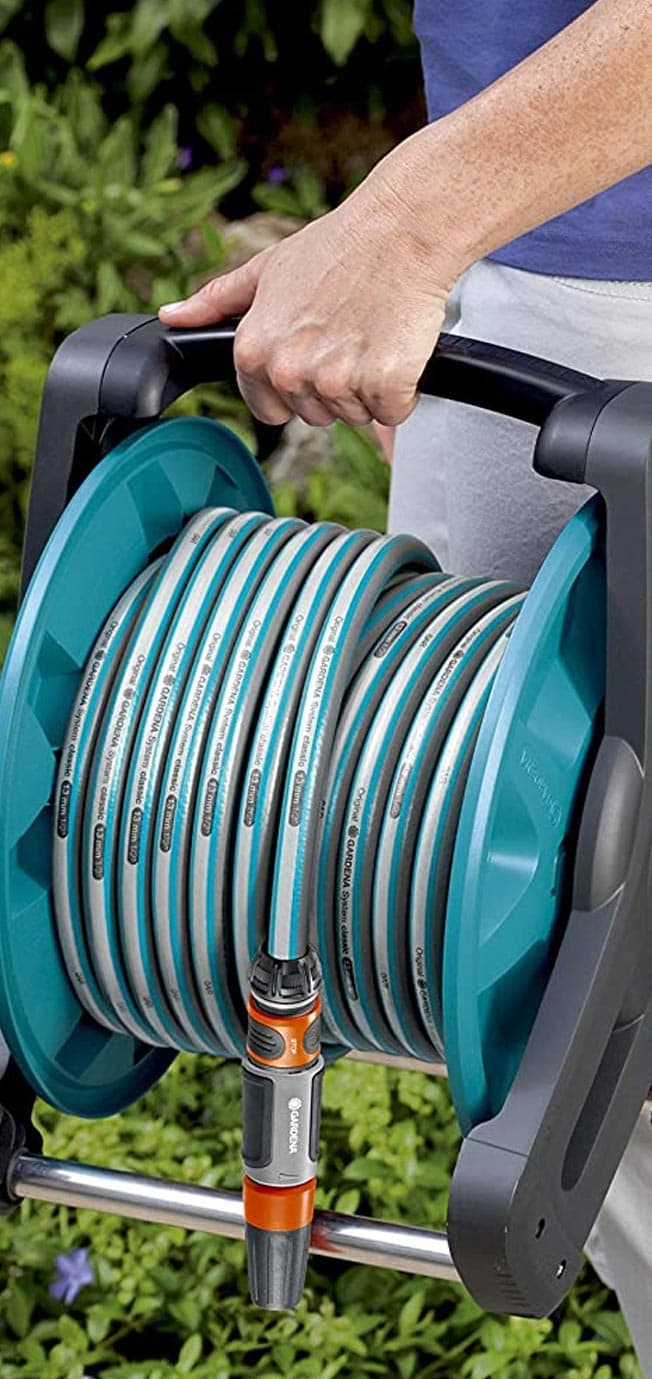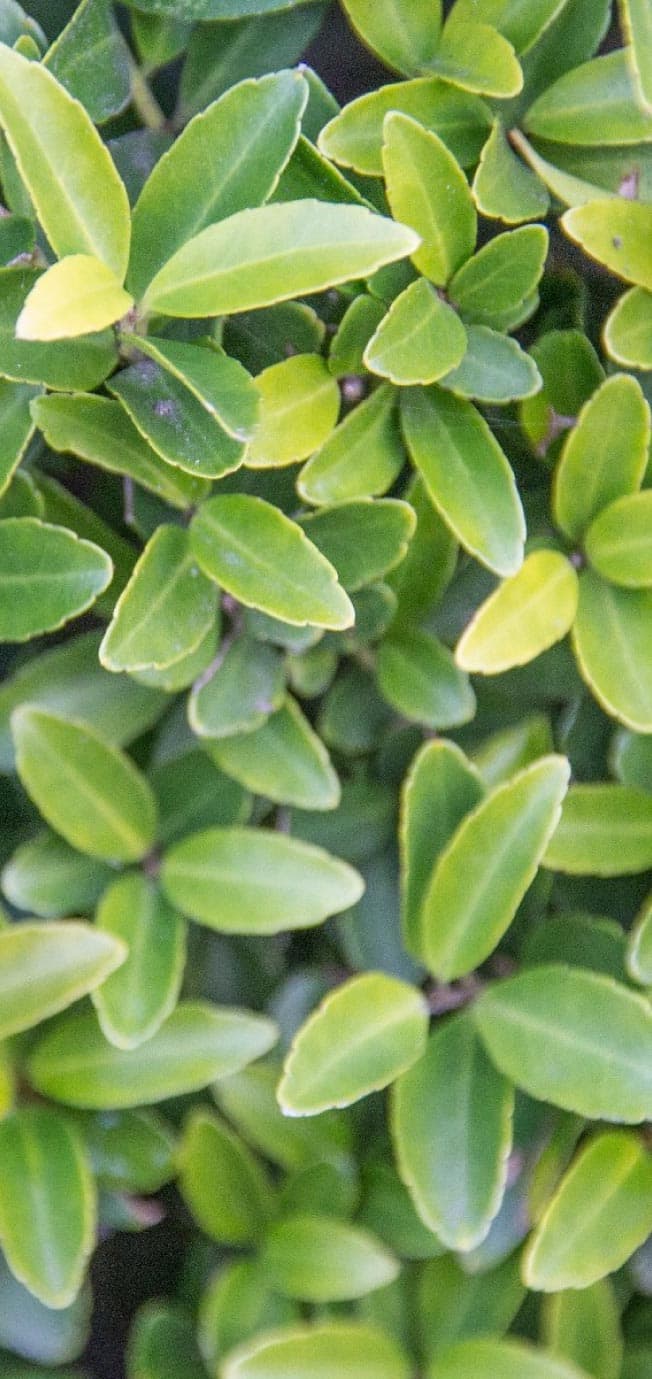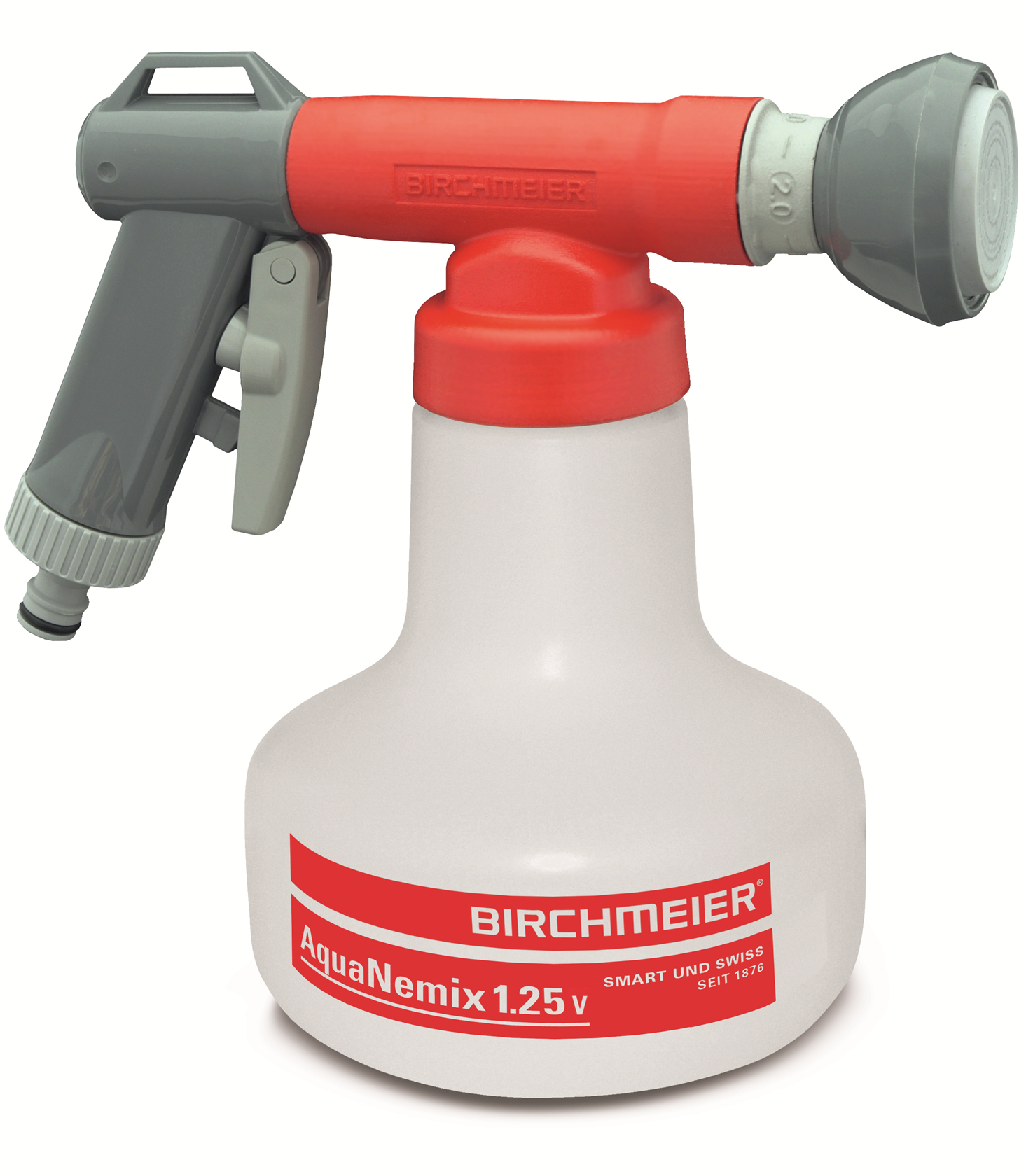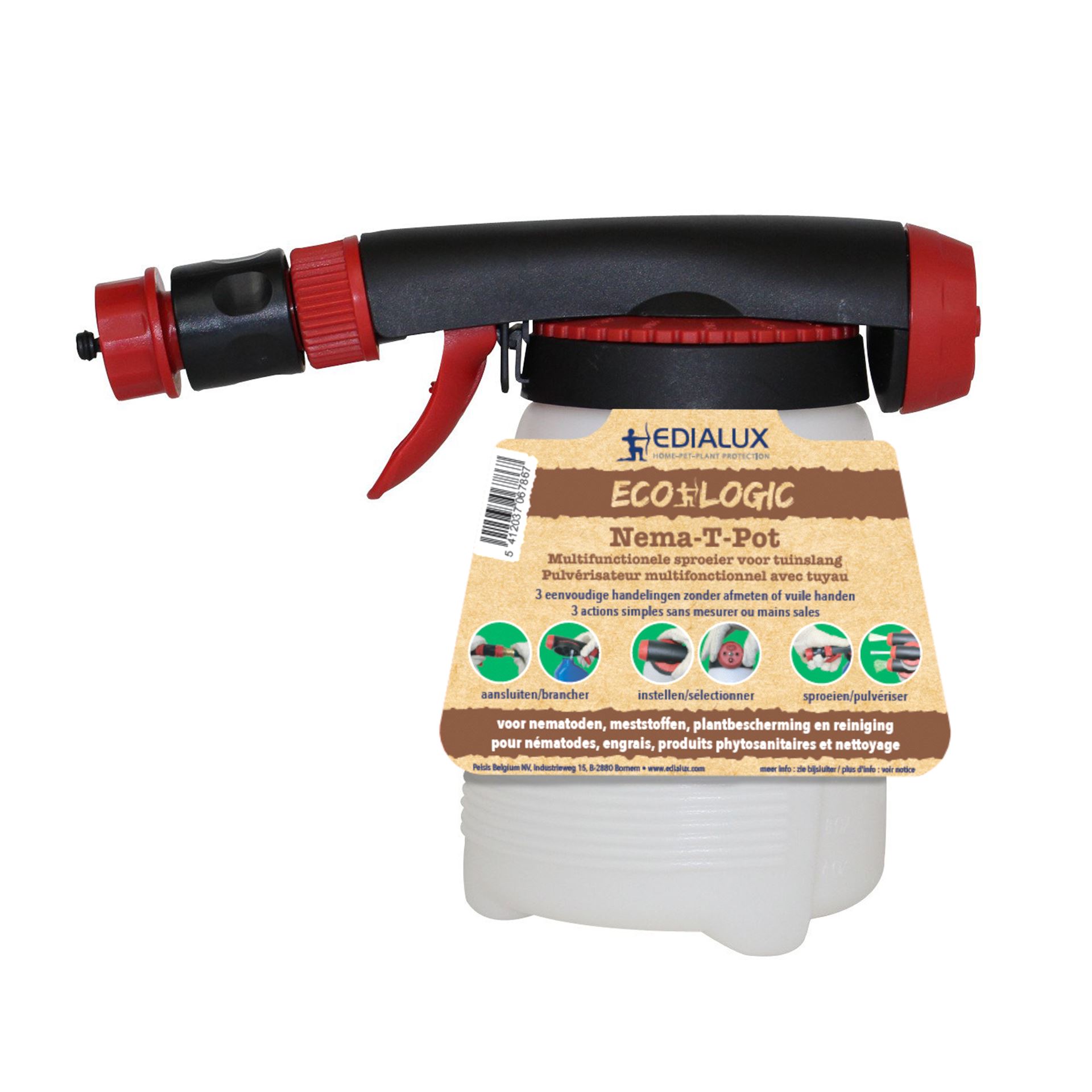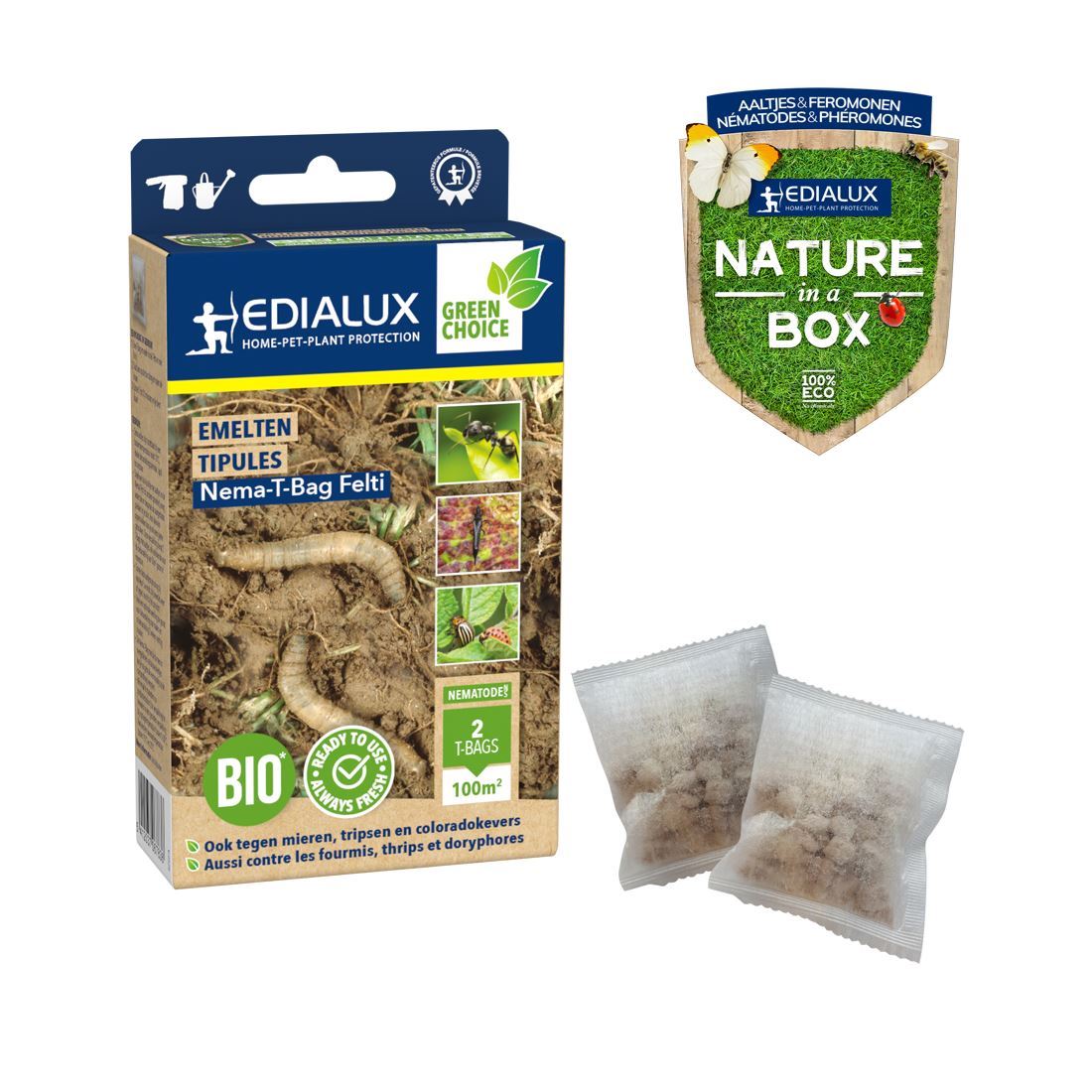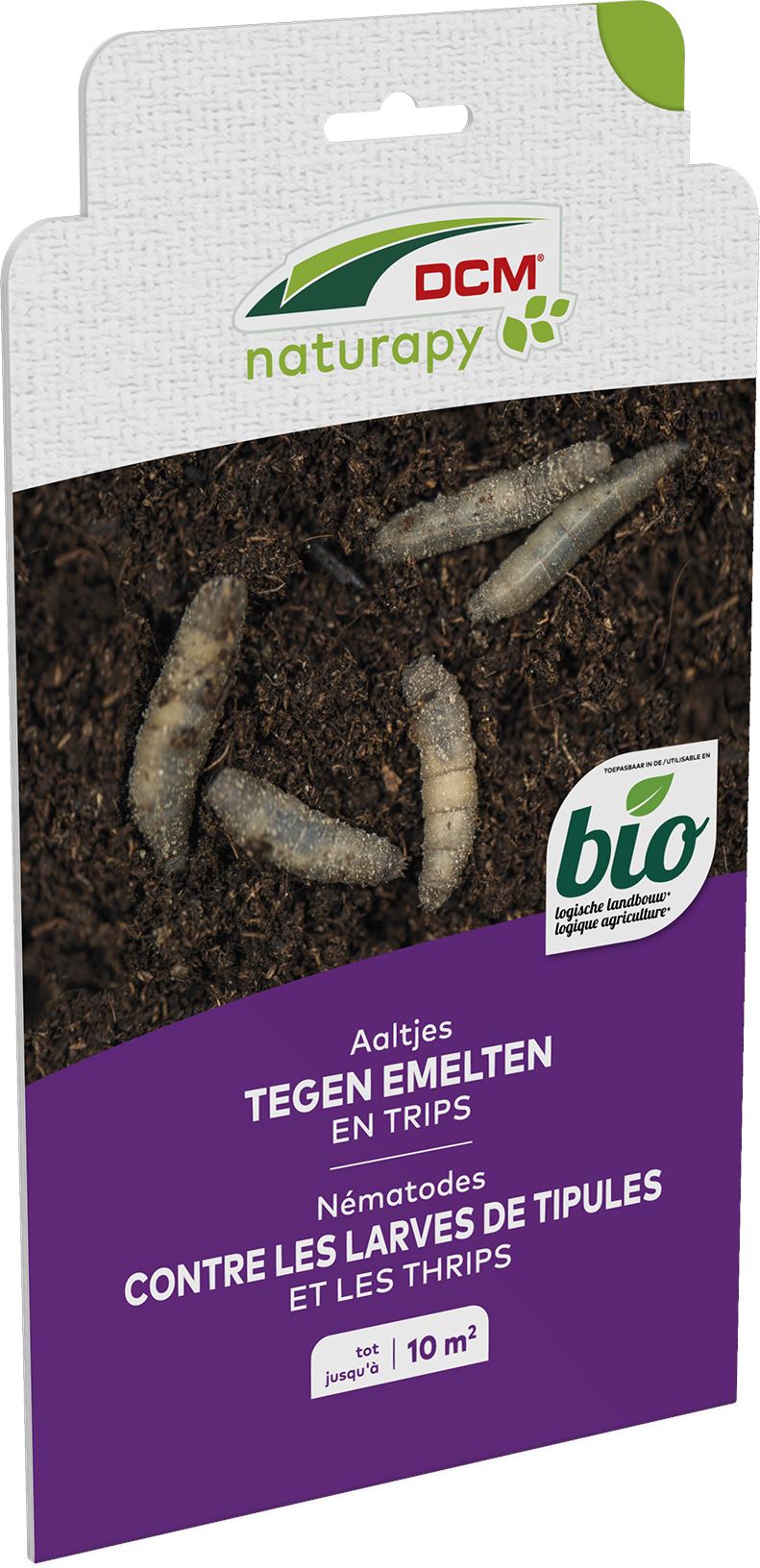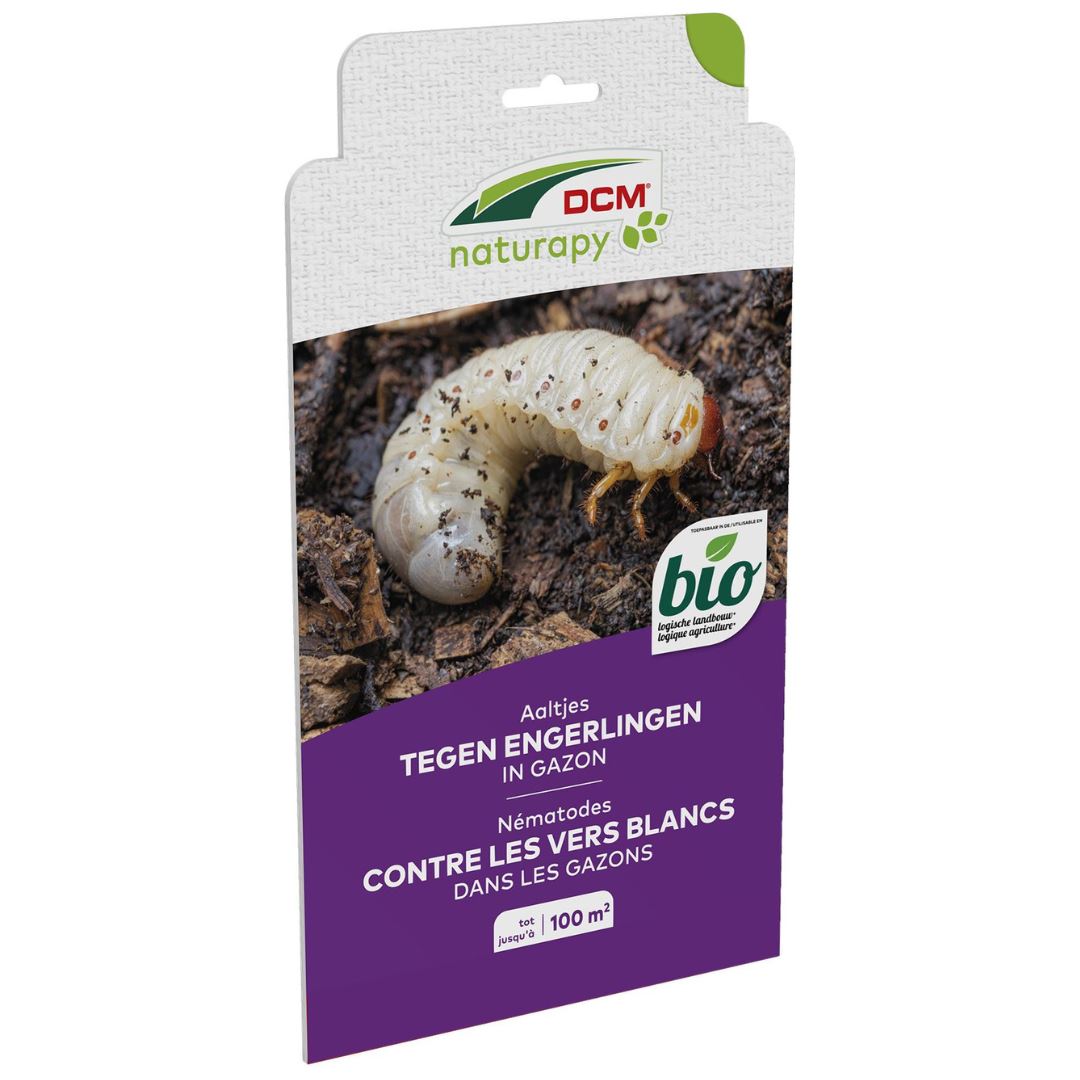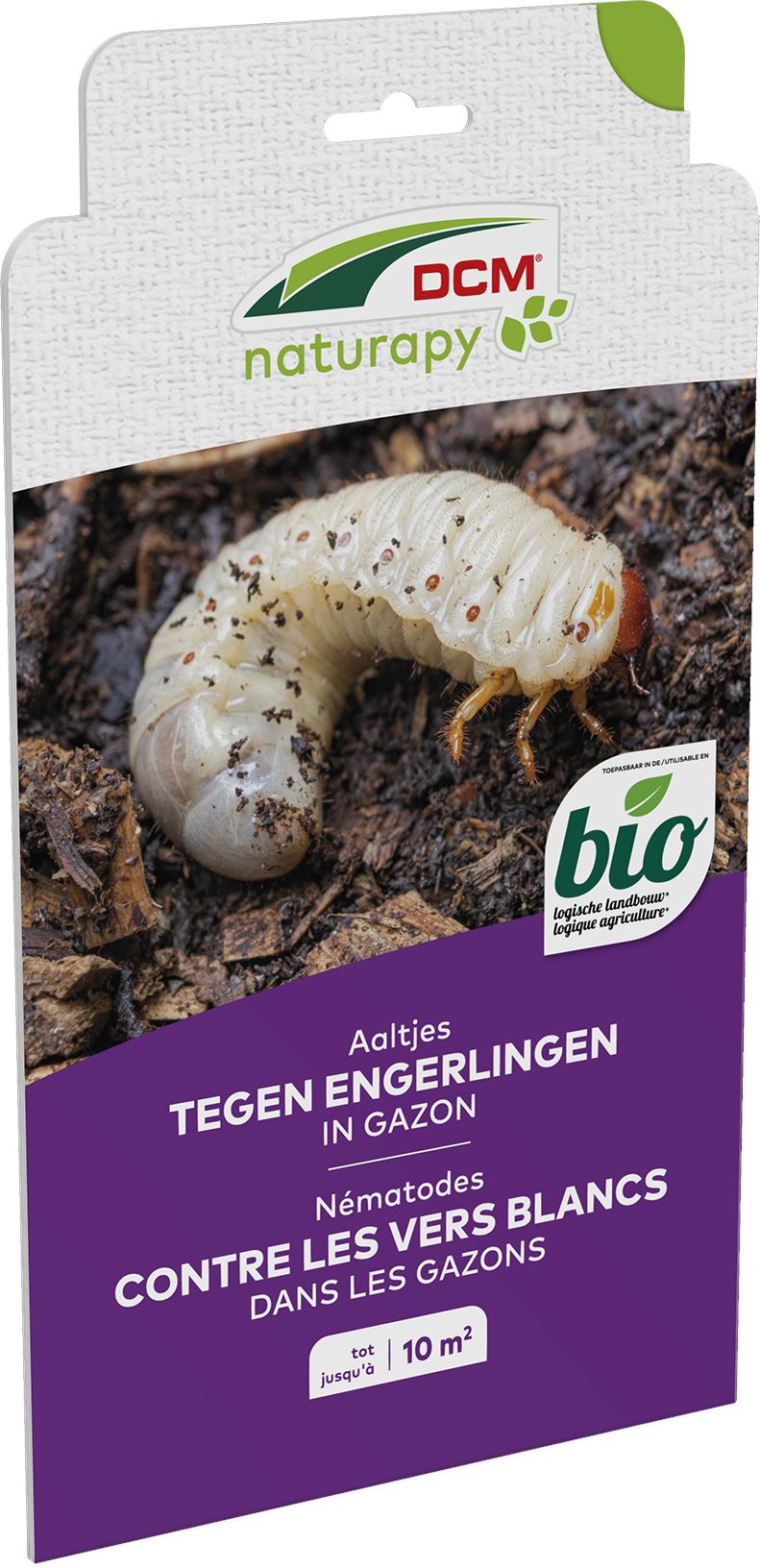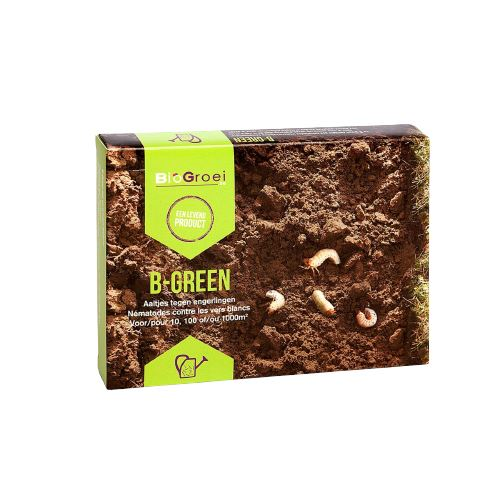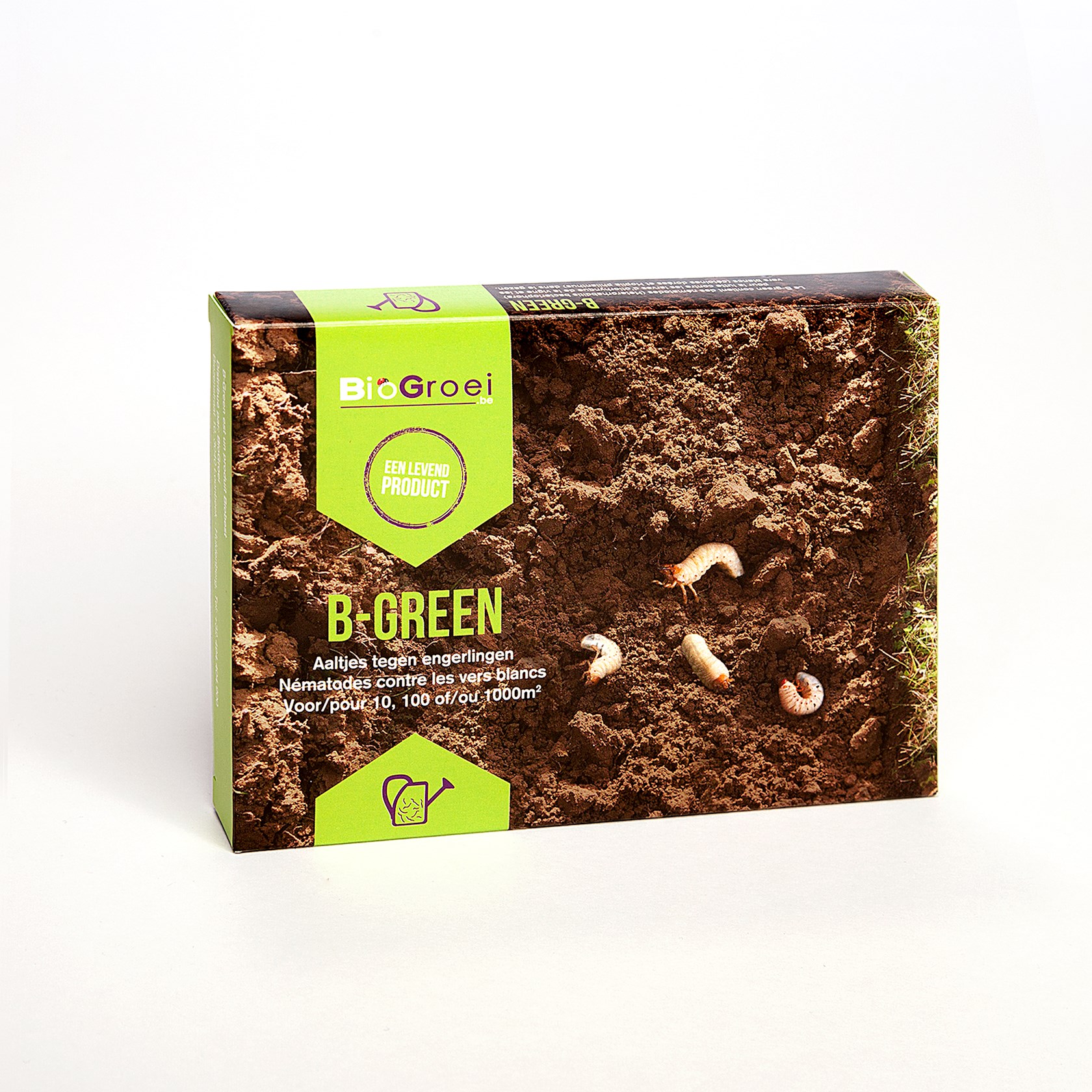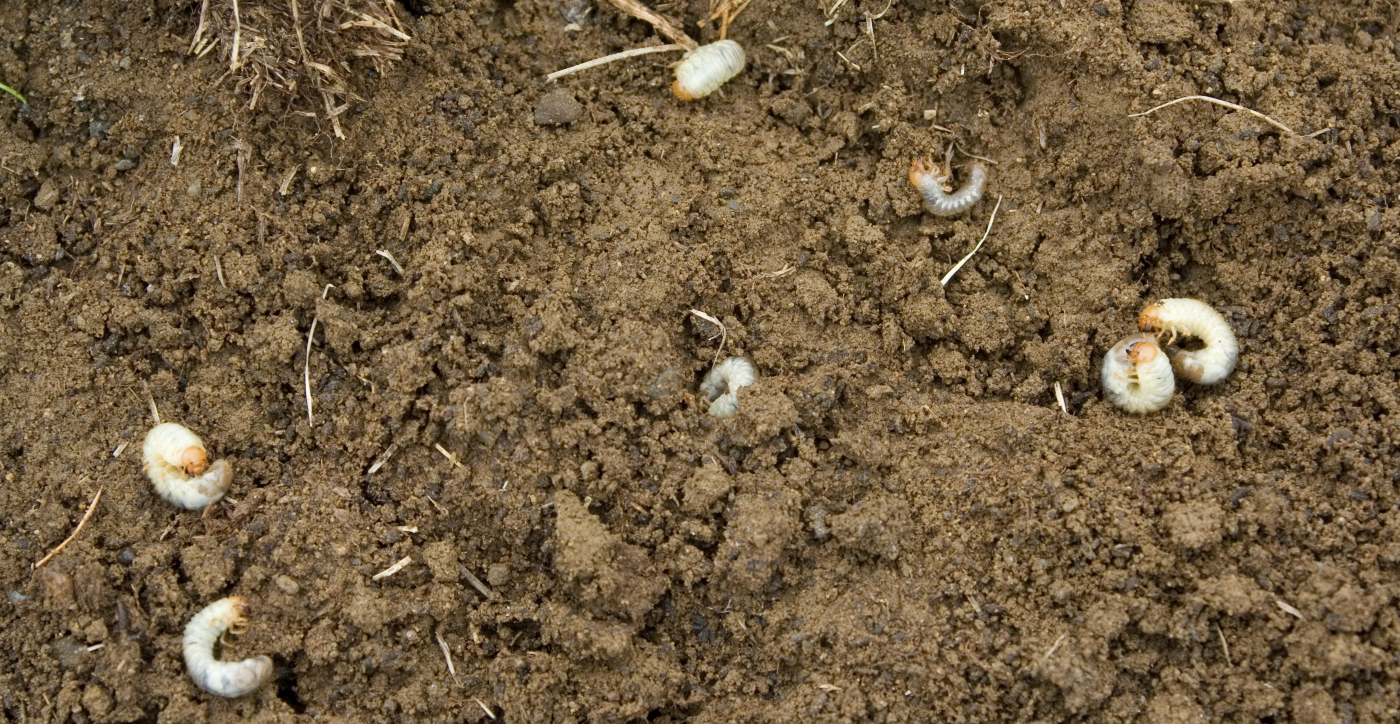
Three remedies for white grubs in your lawn
What is the difference between white grubs and leatherjackets?
Every healthy soil contains soil insects such as worms and larvae. And that is also necessary for the fertility of the soil! Unfortunately, leatherjackets and grubs also find their way into your garden. They love the roots of the lawn so they can do a lot of damage. When grubs invade your lawn, the first thing you will notice are dry patches. They usually start out small, but if you do not fight them in time, these unwanted guests will eventually attack your entire lawn.
-
White grubs are fairly thick, yellowish-white larves. They originate from the May, June and Rose chafer. The larvae always lie in a curled C-shape, and are two to four centimetres long. They emerge in a wooded area or lawn with loose soil structure. You can clearly recognise their legs and head in the lawn. Can't see them? Then you are not dealing with grubs, but with leatherjackets or larvae of cabbage flies, for example.
- Leatherjackets are the larvae of the crane fly. Unlike grubs, they do not eat the roots but the grass itself. However, the result is the same: withered & eaten bare patches of lawn. Or damage caused by birds eating the leatherjackets and piercing your lawn to do so.
It is important to know if there are leatherjackets or grubs damaging your lawn as they need to be controlled in different ways.
The first symptoms
- Have you noticed that more birds than usual are pecking in your lawn? Then this could indicate an increased concentration of white grubs.
- Do you see circles? Then dig right next to them with a small shovel and see what is under the grass. On warm days you can see grubs directly under the grass. Why dig next to it? If the grass has withered, it means that the roots have been eaten for some time. The white grubs have of course already moved so that they can continue to eat.
- In May and June, just before sunset, the beetles (which lay their eggs in the lawn) start flying up from the grass. The more beetles, the greater the chance of higher concentrations of white grubs.
How can you fight white grubs?
1. Biological control: nematodes
Nematodes are small round worms that are not visible to the naked eye. They are often used against snail and beetle infestations. These minuscule worms go looking for the larvae that spoil your lawn. They penetrate the cavities of the larvae and then infect them with harmful bacteria, causing the larvae to die. Here you can find more information about the working of nematodes!
Advantages:
- Selective control = better for nature and for you
- Nematodes kill the larvae but are not harmful to your lawn, plants or pets
- Works fast: after just a few days you will see the first results
Disadvantages:
- Quite expensive
- More labour intensive
- In autumn you have to repeat the treatment to eradicate the new generation of larvae
- You do not eliminate the cause
- You are working with living insects so you have to work fast. The nematodes have a limited shelf life and must be kept at a cold temperature. You cannot keep them for weeks, which is possible with other non-living pest control products. Moreover, the soil temperature must be at least 10-12 °C for an effective treatment.
At the beginning of 2020, Edialux launched a new product: Nema T-bags.
These are the well-known nematodes, but they have been put in a sort of ""false-dead"" state by
cryptobiosis, in which their metabolism has been temporarily switched off. The big advantage of this is that you can keep the nematodes longer and in non-refrigerated condition! By contact with water you take them out of the cryptobiosis and they come back to life. This way, the products do not have to be sent in a refrigerated state either. You receive them much faster and you don't have to use them immediately, which is the case with fresh nematodes.
For your information: we do not offer chemical pesticides at Hermie.
2. Treatment with products based on plant or herbal extracts
Soybean and garlic extracts make the roots and soil of the lawn unattractive, so that the white grubs & leatherjackets will stay away. However, it does not kill them.
Advantages:
- Environmentally friendly
- Birds also stay away from your lawn
Disadvantages:
- Quite expensive
- You expel the larvae but do not kill them
- Several treatments are needed
- Does not eliminate the cause
Available in Belgium and the Netherlands:
3. Preventive work: a balanced garden with strong plants & lawn
You can also take some preventive measures to avoid grubs and blackheads in your garden. Birds love the larvae of grubs and white grubs. So place a few bird houses around your grass to attract our flying friends and prevent this plague. Hedgehogs also like some grubs & leatherjackets on their menu. Also roll your lawn regularly as grubs and black maggots often seek out the loose top layer of grass.
Advantages:
- Ecologically & economically the best solution
Disadvantages:
- You do not remove the cause
- Preventive only: you cannot use it if you are currently suffering from it
- Requires patience and long-term thinking
Are there other insects and pests in the garden? 👇
- Controlling rats and mice
- How to ensure a mole-free garden
- What to do against ants in the garden and at home?
- Catch the buxus moths with a funnel trap
More info? Receive all our gardening tips directly in your mailbox!
We'll only email you handy facts, green advice and our best promotions & discounts. You'll receive it about once a week and you can unsubscribe at any time. No spam, promise 🤞

